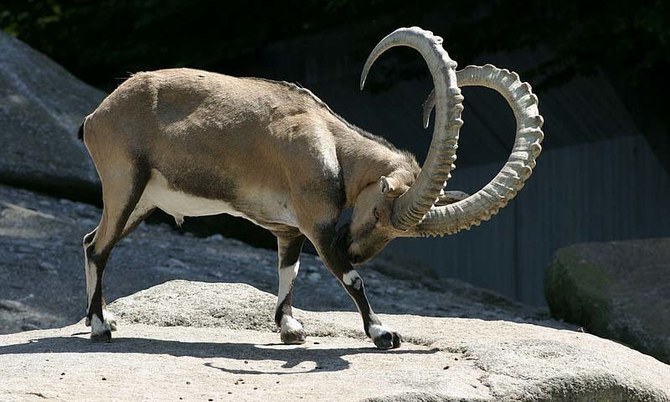PESHAWAR: The wildlife department of Gilgit Baltistan auctioned four licenses on Tuesday for hunting the markhor, a large goat species native to Pakistan, in a move that conservationists argue prevents poaching and empowers local communities.
Zakir Hussain, the chief conservator for forests, parks, and wildlife in Gilgit Baltistan, told Arab News over the phone from Gilgit that the Ministry for Climate Change had agreed to the licenses, including for trophy hunting of the much in demand flare-horned Astore markhor.
Each license was sold for over $80,000, from which 80 percent will go to the villages where the hunt takes place for developing their infrastructure. According to the government’s scheme, 12 licenses for markhors are issued every year in Pakistan, four in Gilgit Baltistan.
The president of a wildlife conservation community in Astore, Abdul Sami, told Arab News that before the licensing was introduced two decades ago, both residents and influential people would just hunt the animals for fun and meat, but now they must have permits to do so.
“I have been working to preserve the markhor for the last 21 years,” said Sami, who is now 48.
The licensing has also benefited rural communities, he argued, as the money from permits becomes their development funds. “We have built schools, hospitals, water supply systems, and maternity homes from the trophy hunting scheme in the area,” Sami said, disapproving of recent social media criticism against markhor hunting. While only several licenses are issued each year, the funds make it possible for underprivileged children to attend school, he said.
According to the chief conservator Hussain, the population of markhors in the Astore Valley is currently 2,500 and had it not been for the licensing program, the markhor would have probably been extinct in Gilgit Baltistan.
On Nov. 4, Khyber Pakhtunkhwa’s wildlife department also auctioned four licenses for hunting the markhor in Chitral and Kohistan districts, collecting more than $500,000. According to the department’s data, the markhor population in the province has increased to over 6,000 from merely 200 in the 1990s.
Trophy hunting season runs from November to April. As markhors prefer cold, they can usually be found at the height of 8,000-11,000 feet, however, during winters they would descend to 5,000-6,000 feet.
Markhor hunting usually takes place at dawn or dusk. “The hunting of female and young animals is absolutely banned,” Hussain said, adding that “usually the age of the markhor is determined by its horns, the older the markhor is, the bigger its horns will be. Markhors live about 15 years on average and the department does not permit the hunting of animals below the age of six. The hunter is accompanied by wildlife department officials who ensure that everything goes in accordance with the rules.




















